The Battle of the P67 Boards - ASUS vs. Gigabyte at $190
by Ian Cutress on January 20, 2011 4:15 PM EST- Posted in
- Motherboards
- Gigabyte
- Asus
- P67
Board Features
| Gigabyte P67A-UD4 | |
| Market Segment | Performance |
| CPU Interface | LGA 1155 |
| CPU Support | i3/i5/i7 Sandy Bridge |
| Chipset | P67 |
| Base Clock Frequency | 80 MHz to 200 MHz in 0.1 MHz increments |
| DDR3 Memory Speed | 1333 MHz by default, 800-2133 MHz supported |
| Core Voltage | Auto, 0.750V to 1.700V in 0.005V intervals |
| CPU Clock Multiplier | Dependant on CPU |
| DRAM Voltage | Auto, 0.90V to 2.60V in 0.020V intervals |
| DRAM Command Rate | Auto, 1N to 3N |
| Memory Slots |
Four 240-pin DDR3 DIMM slots in dual-channel Regular unbuffered DD3 memory Up to 32GB total supported |
| Expansion Slots |
2 x PCI Express 2.0 x16 slots (PCIe 1 operates at x16 in single mode, PCIe 2 operates at x8 in single mode, or x8/x8 in dual) 3 x PCI Express 2.0 x1 slots 2 x PCI slots Supports ATI Crossfire Supports NVIDIA SLI |
| Onboard SATA/RAID |
a) 2 x SATA 6.0 Gb/s ports (white) supporting RAID 0, 1, 5 and 10 b) 4 x SATA 3.0 Gb/s ports (black) supporting RAID 0, 1, 5 and 10 c) 2 x eSATA 3.0 Gb/s ports from Marvell 88SE9128, RAID 0, 1 a) + b) are capable of cross channel RAID 0, 1, 5, 10 |
| Onboard |
4 x SATA 3 Gb/s w/ RAID 2 x SATA 6 Gb/s w/ RAID 2 x eSATA 6 Gb/s w/ RAID 1 x Front panel audio header 1 x S/PDIF Out header 3 x USB 2.0/1.1 headers 1 x USB 3.0/2.0 header via Renesas (NEC) D720200 chip 1 x Serial port header 1 x Clearing CMOS jumper |
| Onboard LAN | Gigabit Ethernet via Realtek RTL8111E |
| Onboard Audio | 7.1 channel Realtek ALC892 codec |
| Power Connectors |
24-pin EATX Power connector 8-pin EATX 12V Power connector |
| Fan Headers |
1 x CPU fan header 2 x System fan headers 1 x Power fan header |
| I/O Panel |
1 x PS/2 keyboard/mouse port 1 x Coaxial S/PDIF Out connector 1 x Optical S/PDIF Out connector 8 x USB 2.0/1.1 ports 2 x USB 3.0/2.0 ports via Renesas (NEC) D720200 chip 2 x eSATA 6Gb/s ports 1 x RJ-45 port 8-channel Audio I/O ports |
| BIOS Revision | F7 Beta |
In the Box
- I/O shield
- SLI 3-slot bridge
- 4 x right-angled SATA connectors
Compared to the ASUS P8P67 Pro, both boxes do not come with much in the way of extra peripherals. Here we get an SLI 3-slot bridge (compared to the 2-slot on the ASUS) but lose the USB 3.0 rear bracket, meaning that one will have to be obtained in order to use the USB 3.0 header on the Gigabyte board.
Software
Smart 6
Smart 6 tries to encapsulate a good portion of the myriad of software available in easy-to-use quick buttons, and is essentially identical to the X58 and P55 iterations of the software. The QuickBoot portion attempts to speed up boot times by bypassing the lengthy BIOS post, assuming there has been no physical hardware change. QuickBoost is a single screen overclocking utility, similar to the EasyTune6 front page. Recovery2 helps roll back the system to a previous set of settings without predefinition of a backup time flag, and also the TimeLock, which is almost superfluous given Windows7 has Parental Controls.
The idea behind TimeLock is similar to that on the Xbox360 parental controls – specify a certain number of hours per day (in this case, two different values for weekdays and weekends) for which the computer can be in use.
@BIOS
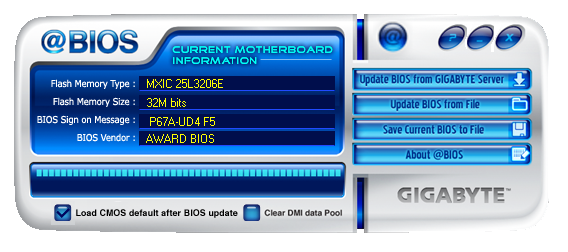
@BIOS is the staple Gigabyte BIOS update utility, and has been for a few iterations now. Users should note that to flash the latest BIOS files, the version of @BIOS on the CD is insufficient, and @BIOS 2.1 is required. 2.1 can be downloaded from the Gigabyte website.
Dynamic Energy Saver 2
Another program that Gigabyte has been using on various chipsets is the Dynamic Energy Saver 2. As you can see from the picture, various power saving features can be enabled or disabled through user settings, or you can let the software determine the best course of action.
EasyTune6
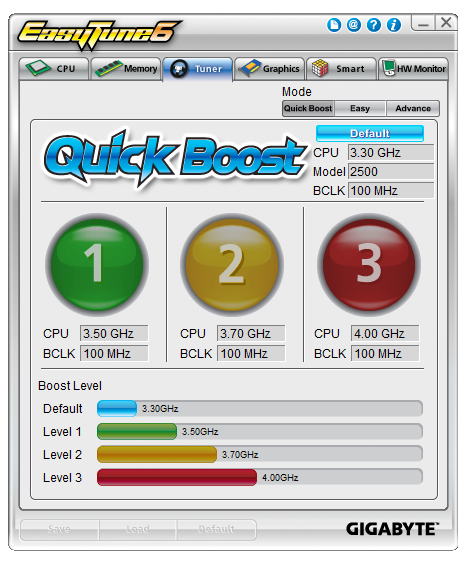
The OS overclocking tools are predominantly housed in EasyTune6. The front screen has those easy to use OC buttons, but only having three up to 4 GHz is somewhat limiting on the Sandy Bridge platform, given that most processors will happily do 4.4 GHz plus. There is no system of auto-overclocking detection similar to the ASUS boards.

Despite the software having an option for ‘real time ratio change’, of which there is an option in the BIOS to enable/disable, I could not get this to work. Upon setting a new multiplier, I was asked to reboot to apply it.
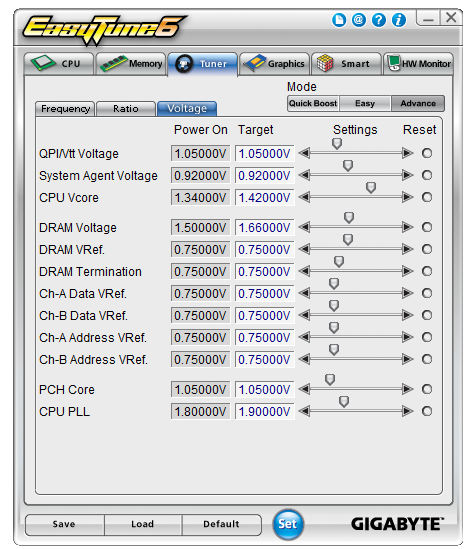
As always with EasyTune6, going to advance mode allows voltage manipulation. While it is nice to have such a wide variety of options, given that for Sandy Bridge all you really need is CPU VCore, DRAM and CPU PLL, it would have been easy just to include those in the ‘easy’ mode.

Fan control is basic in EasyTune6. Even in advanced mode, as shown above, you can choose where to put the initial and final ramp positions in terms of temperature against max RPM, but there is no option to define further points on the curve, or no determination of separate fans, so all chassis fans will be controlled by this one profile.



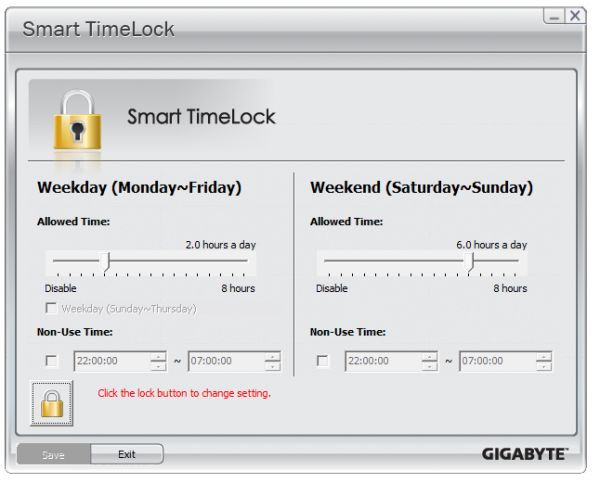
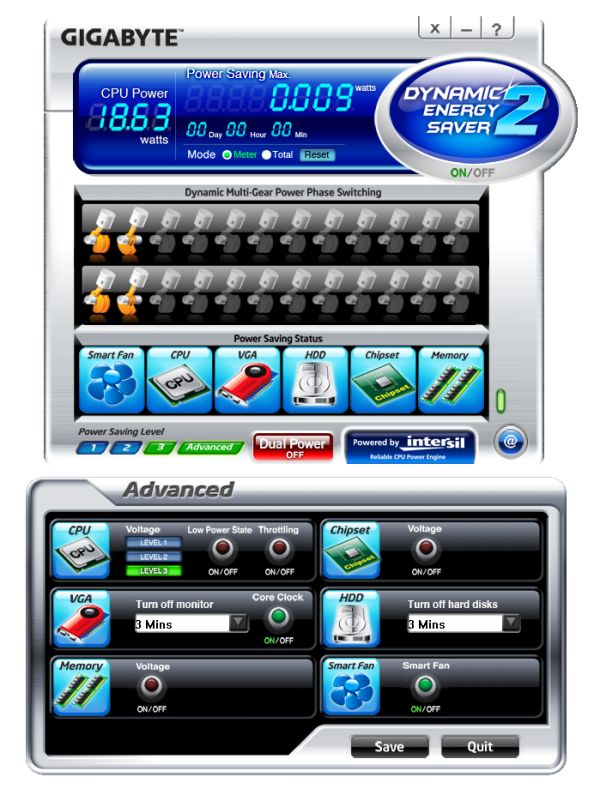








137 Comments
View All Comments
jigglywiggly - Thursday, January 20, 2011 - link
gr8 article and I liked the ending comparison to the asrock board, I'ma get that. Just has so many features.vol7ron - Thursday, January 20, 2011 - link
Can't see getting P67. Waiting on Z67. Hopefully it will be all I ever dreamed ofKaboose - Thursday, January 20, 2011 - link
Z68 they didn't stay with 67 on the "Z" chipset apparently.DanNeely - Friday, January 21, 2011 - link
Possibly since LGA 2011 will also use DMI to connect to the chipset Z68 boards will be sold for both sockets; and presumably some of the more mundane chipsets would be used for server/workstation builds.Etern205 - Friday, January 21, 2011 - link
LGA 2011 will use the X68 which is different than Z68.SB chipsets
Highend: LGA 2011/X68
Mainstream LGA 1155/Z68<--Allows for OCing.
vol7ron - Saturday, January 22, 2011 - link
Yep. It was either a typo or a finger fart :)Still, I'm hoping the processor batches will have improved by then. What I'm hoping for is the CPUs to mature a little bit, to possibly get a little higher BCLK overclock (not looking for much, just closer to the 5Mhz).
DanNeely - Sunday, January 23, 2011 - link
Don't hold your breath. The BCLK limit is most likely due to something on your PCI/PCIEe buses (neither of which are designed for any overclock at all) bombing out; not your CPU.medi01 - Friday, January 21, 2011 - link
Suddenly, paying 150-200$ for a motherboard is OK.After all, it makes Intel CPUs "cheaper".
MrSpadge - Sunday, January 23, 2011 - link
It's been like that for a long time. But personally I never saw the value in expensive motherboards.MrS
medi01 - Monday, January 24, 2011 - link
I don't recall it "being like that" for AMD motherboards.